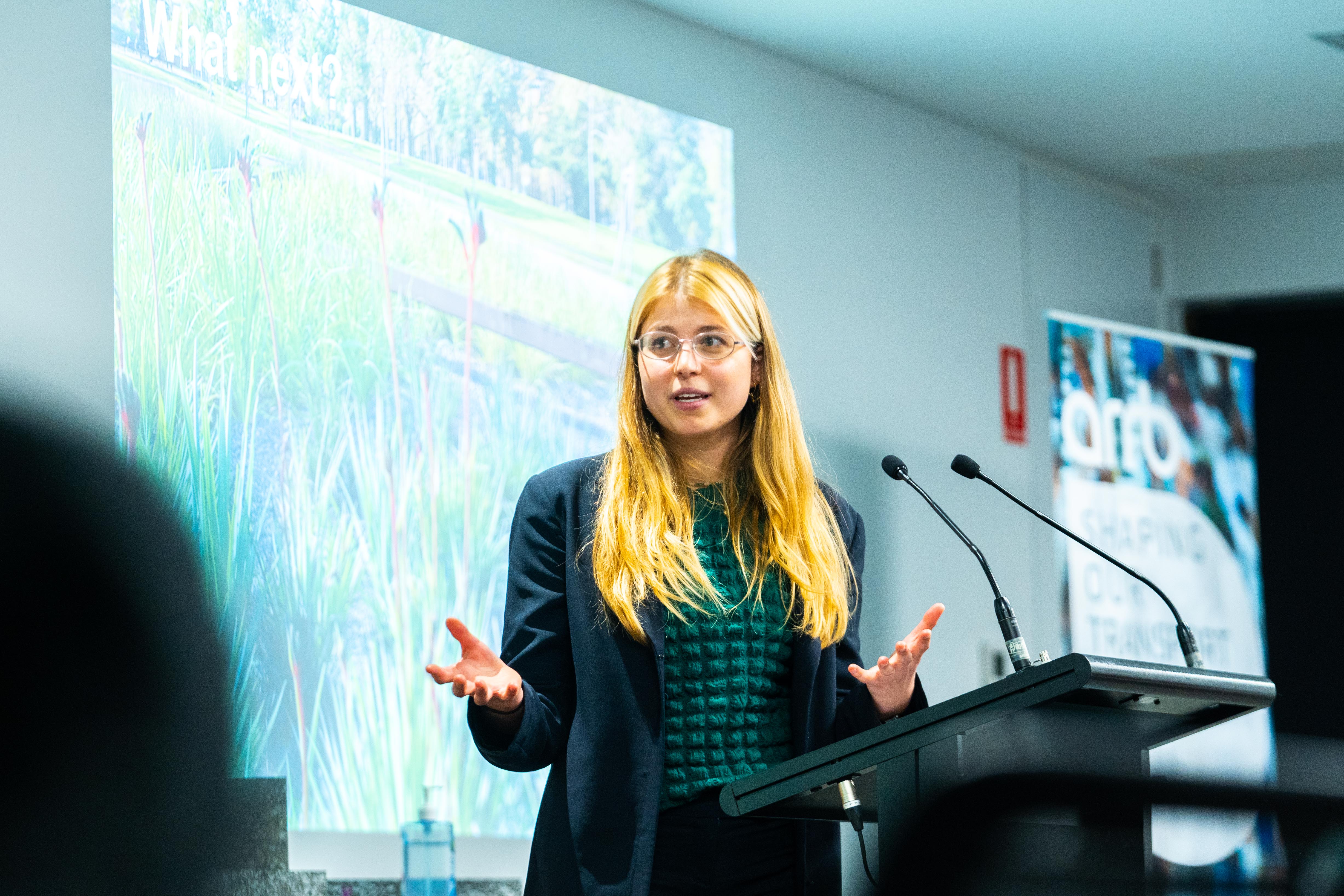Raingarden design wins Innovation Challenge for Fishermans Bend

A raingarden concept using locally made construction waste materials is set to become a reality at Fishermans Bend, winning $70,000 from the City of Melbourne Fishermans Bend Innovation Challenge.
Master of Engineering (Environmental) student Amira Moshinsky and fellow University of Melbourne students designed the winning raingarden concept that focuses on circular-economy principles, impressing judges and the voting public.
The winning raingarden design aims to reduce the carbon footprint by repurposing construction waste at Fishermans Bend - including crushed concrete and bricks, waste glass and timber that would otherwise go to landfill - to filter stormwater and moderate storm flows.
These materials will replace less sustainable and more costly conventional raingarden materials like freshly quarried sand and gravel. Drought resistant plants will also be used for their filtering and aesthetic qualities.
Moshinsky developed the winning concept from an original design by a team of fellow University of Melbourne students – supported by Professor Alexander Felson, Elisabeth Murdoch Chair of Landscape Architecture at the Faculty of Architecture, Building and Planning (ABP), and Associate Professor Peter Cebon, Head of the Innovation Practice Program at the Faculty of Engineering and Information Technology (FEIT).
The students who designed the original concept with Moshinsky were Jisoo Jeon, Nathan Dowe, Liam Murray and Michael Jin from FEIT, and Brian Wong from ABP.
The $70,000 prize will allow Moshinsky and fellow students to work with the City of Melbourne’s Emerging Technology Testbed team to bring the raingarden concept to life.
“The raingardens will improve climate resilience, with a sustainable and cost-effective, garden-based drainage design,” Moshinsky said.
“This will close the loop on local waste, while contributing to the unique character of Fishermans Bend. I hope these raingardens will inspire more circular economy innovation.”
Associate Professor Peter Cebon said the design team’s commitment and enthusiasm helped to achieve an impressive concept.
“Engineering will contribute to the design of the raingardens and associated software; landscape architecture will help us understand how to make the concept work on the campus and how to design the experiments to test the designs; and horticulture will guide plant selection,” Associate Professor Cebon said.